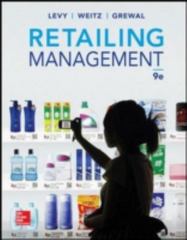Question
Module 1: UNDERSTANDING WORKPLACE CONFLICT DEFINITION Module 1 will cover the topic of Understanding Workplace Conflicts. We must first understand the definitions of conflict and
Module 1: UNDERSTANDING WORKPLACE CONFLICT
DEFINITION
Module 1 will cover the topic of Understanding Workplace Conflicts. We must first understand the definitions of conflict and workplace conflict. Conflict is a fundamental aspect of human behavior that arises from conflicting interests, values, or beliefs among individuals or organizations. It can occur in different contexts, including personal relationships, workplaces, or on a broader societal level.
Subsequently, Workplace conflict is the occurrence of conflicts or disputes between individuals or groups in a professional setting. Conflicts can arise from differences in perspectives, values, goals, or communication styles. Workplace conflict can arise between colleagues, employees, and supervisors or within different departments or teams.
TYPES OF CONFLICTS
Conflicts in a workplace can stem from diverse origins and appear in numerous ways. Common workplace conflicts include:
- INTERPERSONAL CONFLICT: Interpersonal conflict arises from discrepancies in personalities, communication styles, ideals, or work habits between individuals or team members. An Example is a conflict between management and employees because of their differing communication styles. The manager prefers giving direct feedback, but the employee chooses a more diplomatic approach.
- JOB-RELATED CONFLICT: Job-related conflict arises from disputes over work assignments, goals, priorities, or methods of job completion inside a team or across departments. E.g., Team members disagree on the best method to reach a common goal, leading to disputes on the most efficient way to complete the assignment.
- ROLE CONFLICT: Role conflict occurs due to ambiguity or overlap in work tasks, resulting in misunderstanding, competition, or inefficiency in task execution. An example of this is when an employee faces role conflict when required to report to two different superiors with contradictory expectations and instructions
- LEADERSHIP CONFLICT: Leadership conflict arises when there are disagreements in decision-making, communication, or management styles between employees and managers or among leaders. For example, Two department leaders have conflicting views on strategic priorities, resulting in conflicts regarding resource distribution and project management choices
- ORGANIZATIONAL CONFLICT: Organizational conflict arises from structural factors, including power dynamics, resource distribution, corporate policies, or cultural disparities. For example, when there is an interdepartmental conflict within an organization over the distribution of limited resources like budget or staffing, The marketing department may request additional resources for a new campaign. In contrast, the finance department may advocate for cost-cutting measures to achieve budget goals. This conflict can affect decision-making processes, collaboration between departments, and the general functioning of the organization
- CONFLICT OF INTEREST: Conflict of interest occurs when personal interests or biases disrupt professional duties, leading to ethical issues or compromising decision-making. For example, A company's procurement manager engages in corrupt practices by awarding a contract to a vendor who provides personal Favors or kickbacks instead of choosing based on objective factors like quality and pricing. This conflict of interest undermines the integrity of the procurement process and may result in ethical dilemmas, legal consequences, and harm to the company's reputation. Individuals in leadership positions must prioritize the organization's best interests and avoid conflicts of interest.
Organizations must efficiently handle workplace disagreements to uphold a positive work environment, enhance productivity, and safeguard employee well-being. Effective workplace conflict management strategies involve open communication, active listening, mediation, conflict resolution training, and fostering a supportive and inclusive business culture.
IMPACT OF CONFLICTS ON WORK AND RELATIONSHIPS
Effectively identifying workplace conflicts will make it easier for the Human Resources Department in an organization to determine the origin of conflicts. Conflicts can have both positive and negative effects on the organization where they occur.Nevertheless, the sound effects of conflicts are fundamentally valuable. It offers innovative ideas, resolves ongoing issues, and offers individuals and groups chances to enhance their skills and foster creativity.
Conflicts in the work environment can lead to
- Reduced productivity: Workplace disagreements can interrupt the flow of work, lower effectiveness, and cause delays in task or project completion.
- Persistent disagreements can lead to low morale and job satisfaction, making people feel anxious, frustrated, demotivated, and unhappy.
- Impaired communication can limit efficient communication among team members, resulting in misunderstandings, breakdowns in collaboration, and lower teamwork.
- Strained relationships due to ongoing confrontations can damage professional rapport among coworkers, bosses, and teams, resulting in trust concerns, resentment, and a breakdown of trust.
- Unresolved disagreements can cause increased employee absenteeism and turnover, as employees may try to avoid the issue and eventually leave the organization searching for a more positive work environment.
- Impact on mental health: Workplace disagreements can significantly affect employees' mental health, resulting in stress and anxiety and potentially leading to burnout or other related health problems.
To mitigate these impacts, organizations must address conflicts proactively, promote open communication, provide conflict resolution training, establish clear policies and procedures, and foster a supportive and inclusive work culture.
USING THIS ARTICLE, KINDLY HELP ME 1. State desired outcome #1 of the module 2.Provide examples of learning activities (e.g., discussions, exercises, role-play, story-telling). Provide a brief description of each (1-2 sentences/bullet points 3.[Simply state how you will assess whether the objective has been achieved for each learning activity (e.g., written test, performance of task, individual reflection, self-assessment, peer-assessment, etc.)]
Step by Step Solution
There are 3 Steps involved in it
Step: 1

Get Instant Access to Expert-Tailored Solutions
See step-by-step solutions with expert insights and AI powered tools for academic success
Step: 2

Step: 3

Ace Your Homework with AI
Get the answers you need in no time with our AI-driven, step-by-step assistance
Get Started


